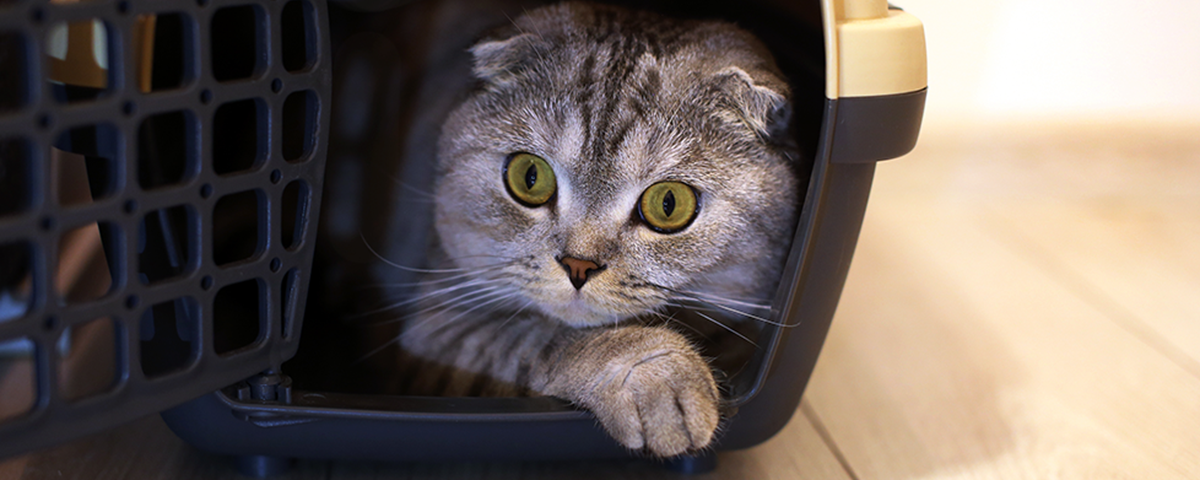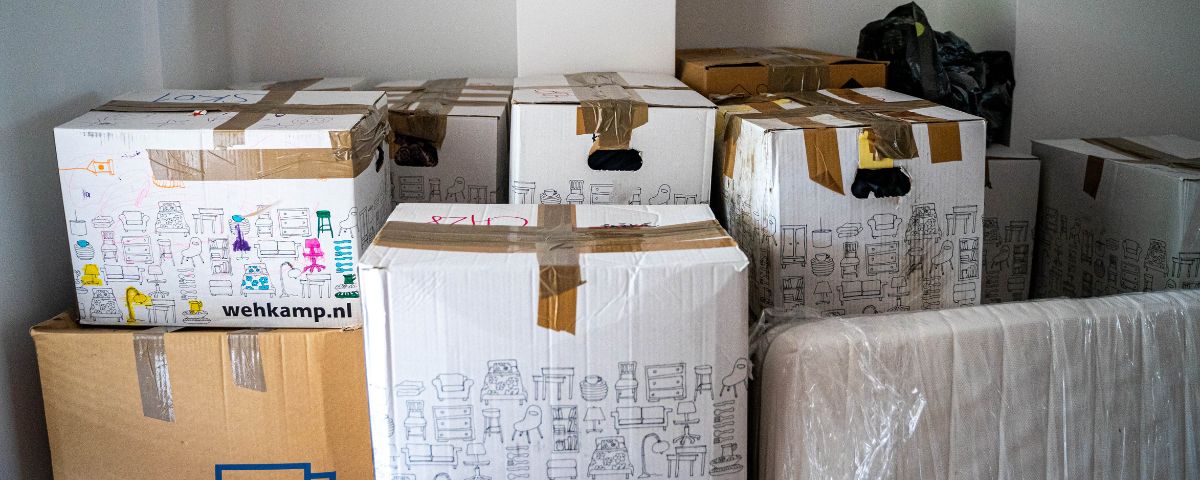
Moving house is an exciting time, but it can be stressful for your furry friends. Cats are very territorial, and the familiar nooks of your home give them comfort and security. If you’ve just bought a new property but are unsure how to make the move trouble-free for your kitty, we’re here to help. Explore our top tips for moving with a cat so you can both settle in nicely.
Before moving
Preparing for the move? Cats are sensitive creatures, so they’ll know if you’re stressed. Follow these tips to help your cat (and yourself) feel calm.
Register with a new vet
The first thing to do before moving with a cat is to register with the new local vet. Remember to update your pet’s microchip details so they won’t get lost in the new neighbourhood. It’s also a good idea to change the address on your cat’s collar.
Create a cat-safe zone
A week before moving, clear out a room in your current house and dedicate it to your cat. Fill it with its bed, toys, scratching posts, litter trays, food and water. This creates a home within a home for your furry friend while you pack your belongings.
Use a pheromone plug-in diffuser
Cats love familiar smells because they help them feel safe. They spread pheromones by rubbing their nose against furniture, so plug in a pheromone diffuser at least 24 hours before you start packing. This way, your kitty will remain calm while you continue to prepare for the move.
Get the carrier out ahead of the move
Cats are intelligent, and they know you better than you might think. So, when they see their carrier, they’ll associate it with travelling – likely going to the vet – and they won’t like it! Taking it out a few weeks ahead of the move can help them get used to it. Put their favourite treats and toys in the carrier to make it look more appealing.
Pack a kitty bag
Fill a kitty bag with all their favourite things. Having familiar objects that smell like your old home will help them ease into the new space, reassuring them that they’re in a safe environment. Label the bag so you can find it quickly and unpack it once you’ve settled in.
Moving day
Discover our top tips for a smooth moving day below.
Travel safe
Secure the carrier by wedging it in or strapping it down using the seat belts. Keep it out of direct sunlight and ensure your vehicle is well-ventilated.
Plan the quickest route to your new home to minimise your cat's travel time. If you're moving far away, schedule breaks during the journey and check on your kitty throughout. They should have easy access to water and food and a few toys to play with.
Unpack your cat’s belongings first
Start by dedicating a room to your cat, just like you did in your old home. Unpack your kitty bag first so your cat can start playing around and getting familiar with their new environment.
Keep your routine the same
Cats love routines, so try to keep it the same as much as possible. This includes feeding them and having one-on-one playtime at the usual time. This will give them a sense of security and control over the new space.
After moving
Now that you’ve started making the new house your own, there are a few things you can do to put your furry friend at ease.
Gradually expand your cat’s new territory
For the first few days, it’s a good idea to keep your cat limited to one room. It can be overwhelming for them to have access to the whole house, as it’s a territory they’re not used to. Then, gradually let them explore new spaces, making sure every door and window is closed. Respect your furry friend’s pace and take it day by day – they’ll let you know when they’re settled in.
Explore the outdoors
If you have an outdoor cat, it’s important to keep them inside for the first three weeks. This will give them enough time to get acquainted with the new space. Don’t force them to go outside if they aren’t ready. Leave the door open and go outside to see if they do the same. Build up their confidence slowly – they’ll reward you before you know it!
Moving with your cat doesn’t need to be stressful. If you follow these helpful tips, your kitty will settle in quickly.
Looking for a new home? Discover our energy-efficient properties across the UK, including 3 bedroom houses and 5 bedroom houses. Call our Sales Advisers at your nearest development to find the right offer and property for you.

